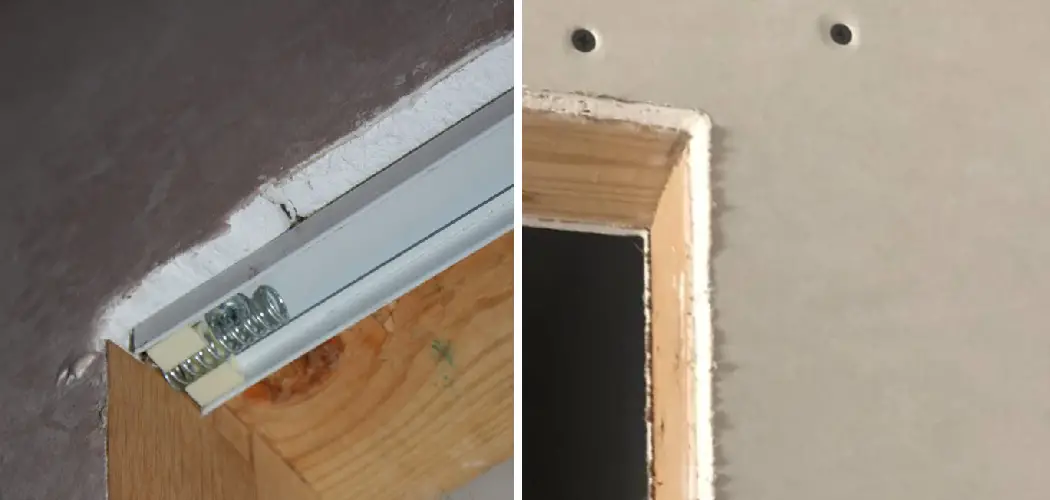Drywall is a commonly used construction material for walls and ceilings, but it’s susceptible to damage due to heavy use or accidental contact. One of the most common areas where drywall damage occurs is around door frames. Whether it’s from people bumping into the frame or doorknob or from door installation or removal, the area around a door frame can easily become dented, scratched, or punctured.
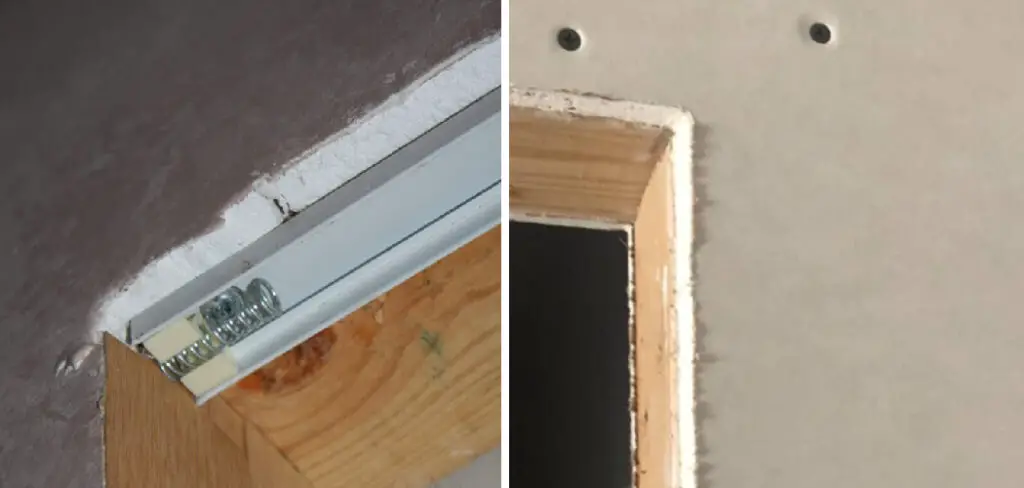
Fortunately, patching drywall around a door frame is a relatively simple process that homeowners can do on their own. If you’re looking to repair drywall damage around your door frame, here’s how to patch drywall around door frame.
Can You Patch the Drywall Around the Door Frame?
If you’ve noticed that the drywall around your door frame looks a bit rough, you may wonder if it’s possible to patch it up. The good news is that, in most cases, you can successfully repair damaged drywall around a door frame. However, it’s important to note that this process requires a bit of skill and precision.
You’ll need to make sure the new patch matches the existing wall seamlessly, and you’ll also need to take steps to prevent future damage from occurring. If you’re comfortable with DIY projects and have some experience working with drywall, this is definitely a task you can handle. However, if you’re not confident in your abilities, leaving this type of repair to the professionals is always best.
Why Should You Patch Drywall Around the Door Frame?
Patching drywall around a door frame may seem like a small task, but it has a big impact on your room’s overall look and feel. Whether you’re selling your home or simply looking to refresh your living space, patching up the drywall around your door frame can make a world of difference.
Not only will it improve the aesthetics of your room, but it can also prevent drafts from creeping through, which can save you money on your energy bill. Additionally, patching up any holes or cracks can protect against mold growth and other moisture-related damage, ensuring your space stays in top condition for years to come. So, if you’re wondering whether it’s worth the effort to patch up your drywall, the answer is a resounding yes!
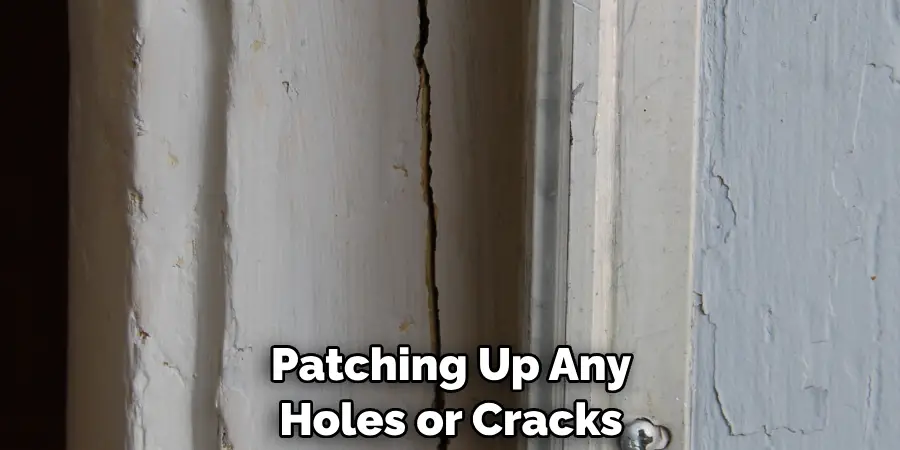
The Ultimate Guide on How to Patch Drywall Around Door Frame
1. Gather Your Materials
Before you begin, ensure you have all the necessary materials. This includes a drywall joint compound, a putty knife, sandpaper, a utility knife, mesh tape, and scrap drywall. You may also need a paintbrush, primer, and paint, depending on the severity of the damage.
2. Cut Out the Damaged Area
Use a utility knife to cut out the damaged area of drywall. Cut along the edges of the damage until you have a clean, rectangular hole. Be careful not to cut into any electrical wires or plumbing that may be hiding behind the drywall.
3. Prepare Your Patch
Take your piece of scrap drywall and cut it to the same size as the hole you just made. Use a drywall saw or utility knife to make the cuts. Then, apply mesh tape evenly over the edges of the hole, making sure to press the tape firmly into place.
4. Apply Drywall Joint Compound
Use a putty knife to apply a thin layer of drywall joint compound over the mesh tape. Make sure to spread the compound evenly and use long, smooth strokes. Once the first layer is dry, apply a second layer and then a third if necessary.
5. Sand and Finish
Once the final layer of drywall joint compound is dry, use sandpaper to sand the surface smoothly. Be sure to feather the edges of the patch to ensure that it blends in with the surrounding wall. From here, you can paint the patch to match the rest of the wall or patch the entire wall for a more cohesive look.
6. Paint and Primer as Necessary
If you plan to paint the patch, apply a primer first to provide an even base for the paint. Once the primer is dry, apply two coats of paint, allowing each coat to dry completely before applying the next.
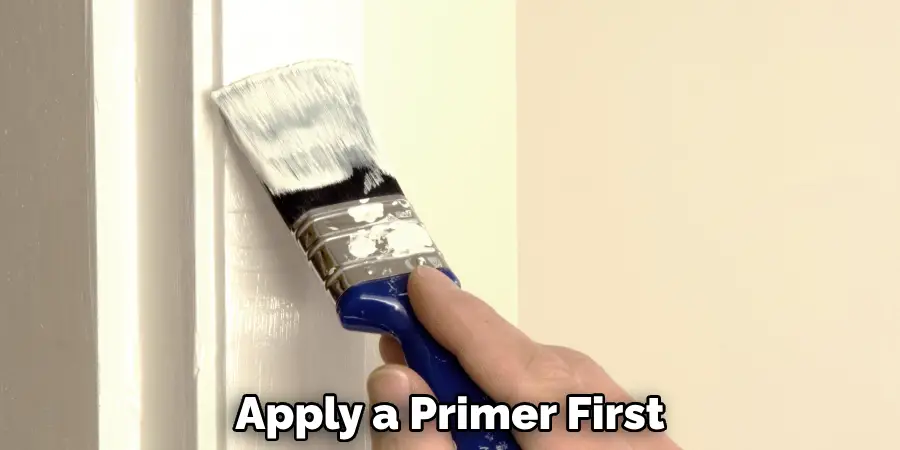
7. Inspect for Any Imperfections
Once the patch is complete, inspect it carefully to make sure that there are no imperfections. If any remain, use a small amount of joint compound and sandpaper to smooth them out.
By following these seven steps, you can easily patch drywall around door frames. You can repair any damage quickly and efficiently with just a few simple tools and materials. So don’t be intimidated by the task—patching drywall is a simple job that almost anyone can do!
5 Considerations Things When You Need to Patch Drywall Around Door Frame
1. The Size of The Hole.
The first thing you need to consider when patching a hole in your drywall is the size of the hole. If the hole is small, you can simply use a piece of mesh tape to cover it. However, if the hole is larger, you will need to use a piece of drywall to patch it.
2. The Type of Drywall.
Another thing to consider when patching drywall is the type of drywall that you have. There are two types of drywall: paper-faced and fiberglass-faced. Paper-faced drywall is easier to patch, while fiberglass-faced drywall is more difficult.
3. The Tools You Need.
If you are going to be patching a hole in your drywall, you will need a few tools. These include a piece of drywall, a utility knife, sandpaper, and joint compound.
4. The Time It Will Take.
Patching a hole in your drywall will take some time, so be sure to set aside enough time to complete the task. It is best to start with a small hole and work your way up to larger holes.
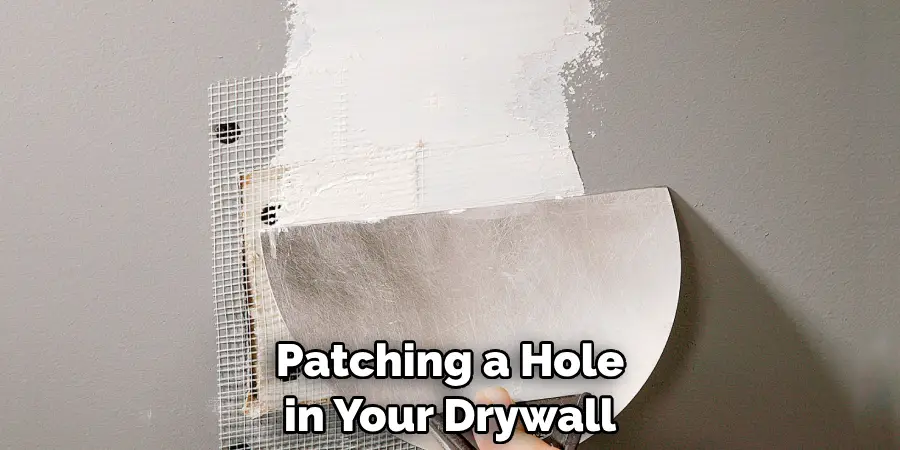
5. The Cost.
Finally, you need to consider the cost of patching your drywall. If you are hiring someone to do it for you, the cost will be higher than if you do it yourself.
5 Benefits of Patch Drywall Around Door Frame
1. Aesthetics
One of the primary benefits of patching drywall around door frames is that it can improve the aesthetics of your home. If you have cracks or holes in your drywall, patching them can make your home look neater and more polished. Additionally, if you plan to sell your home, patching drywall around door frames can help increase its value.
2. Prevents Damage
Patching drywall around door frames can also prevent further damage from occurring. Cracks and holes in drywall can allow moisture to enter, which can lead to mold and mildew growth. Additionally, if cracks and holes are left unpatched, they will only continue to grow larger over time. By patching these areas, you can prevent further damage from occurring.
3. Save Money
Patching drywall around door frames can also save you money in the long run. If you do not patch cracks and holes, they will only continue growing larger and eventually need replacement. By patching them now, you can avoid having to replace your drywall entirely down the road.
4. Easy to Do
Another benefit of patching drywall around door frames is that it is relatively easy to do. You do not need special skills or tools to patch drywall; you only need some joint compound and a putty knife. Additionally, many resources are available online that can provide step-by-step instructions on patching drywall properly.
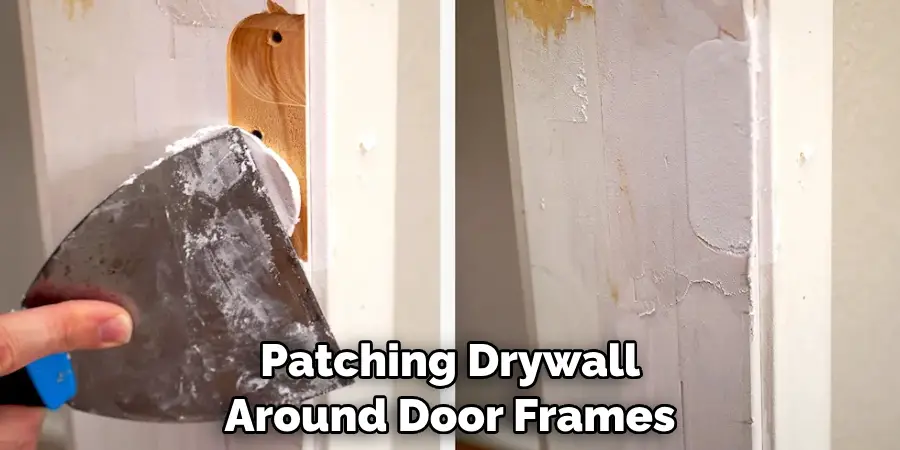
5. Can Be Done Quickly
Another benefit of patching drywall around door frames is that it is a quick project that can be completed in a few hours. Unlike other home improvement projects, such as painting or re-carpeting, patching drywall does not require a great deal of time or effort. You can typically complete the project in just a few hours, making it a great option for busy homeowners.
With a few simple tools and some joint compound, you can quickly patch drywall around door frames and increase the value of your home. So if you have cracks or holes in your drywall, don’t wait any longer – get to patching!
Some Common Mistakes People Make When Trying to Patch Drywall Around Door Frames
It’s a common scenario – you walk through a doorway, glance up at the wall surrounding it, and notice some unsightly holes or cracks in the drywall. But before you jump in with a putty knife and spackle, it’s worth considering some of the mistakes that many people make when attempting to patch drywall around a door frame. For starters, skipping the proper preparation steps, like sanding and cleaning the area, can result in a messy, inconsistent finish.
Choosing the wrong type of patching compound or failing to apply it in thin, even layers can also lead to undesirable results. And perhaps most importantly, rushing the process and failing to give the compound adequate time to dry and cure can result in a final product that is anything but seamless. Luckily, with a bit of patience and attention to detail, you can learn to avoid these common mistakes and achieve a professional-looking patch that blends seamlessly with the surrounding wall.
Conclusion
Now that you know how to patch drywall around door frame, you can tackle this common household repair with confidence. Remember to take your time and work carefully, ensuring that you cut and apply each layer of material as smoothly and evenly as possible. By following these steps, you’ll be able to restore your drywall to its original look and function and enjoy a wall that looks as good as new.

